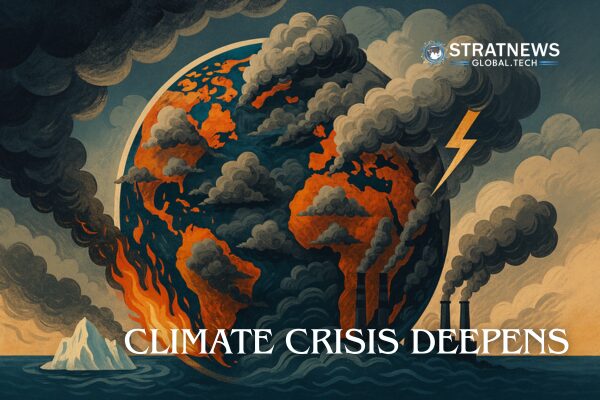Climate Crisis Deepens as CO2 Hits Record High and Global Warming Accelerates
Concentrations of carbon dioxide in Earth’s atmosphere reached a record 422 parts per million in 2024, according to the European Union’s Copernicus Climate Change Service (C3S). This climate crisis comes after another year of unprecedented global temperatures, intensifying calls for stronger climate action.
Scientists Warn 1.5°C Threshold May Already Be Breached
New research suggests the world may have already surpassed the critical 1.5°C warming limit compared to pre-industrial levels. This figure is considered a tipping point beyond which extreme and irreversible climate impacts could become inevitable.
The study, published in Nature Geoscience, analysed atmospheric gases trapped in Antarctic ice cores spanning 2,000 years. Unlike previous measurements that used the 1850–1900 period as a baseline, this study adopted a longer-term view, dating from the year 13 to 1700. It found that warming had reached 1.49°C in 2023, suggesting the world is perilously close to — or already past — the threshold.
Oceans Signal Warning with Shifting Currents and Bleaching Events
The Atlantic Meridional Overturning Circulation (AMOC), a major current system that moderates Europe’s climate, is showing signs of weakening. Research in Science Advances in February 2024 indicates the AMOC could be nearing a critical slowdown, adding urgency to global climate concerns.
Simultaneously, the world is undergoing its fourth mass coral bleaching event — the largest ever recorded. Coral reefs from Australia to Brazil are now under study, with scientists hoping to detect signs of recovery if ocean temperatures stabilise.
Climate Crisis Deepens as Storms and Rising Flood Risks
Warming oceans are producing stronger, faster-developing storms. Some hurricanes are intensifying from Category 1 to Category 3 in just hours. In October 2024, Hurricane Milton rapidly escalated in the Gulf of Mexico, becoming the second most powerful storm to hit Florida’s west coast.
Warmer air also carries more moisture, resulting in heavier rainfall. In September 2024, Hurricane Helene brought severe flooding even to inland locations such as Asheville, North Carolina.
Wildfires and Forests Under Pressure
Hotter conditions are drying forests and rivers, fuelling massive wildfires across regions from Canada and the US West to southern Europe and eastern Russia. A 2024 study in Nature Climate Change estimated that 13% of deaths from wildfire smoke in the 2010s were linked to climate-driven fire intensity.
Brazil’s Amazon suffered its most severe drought on record in 2024, with river levels plunging and wildfires devastating vast areas. Research has shown that up to 47% of the Amazon could face combined threats of drought, heat, and deforestation by 2050. This could push the rainforest past a tipping point, leading to irreversible ecological decline.
Globally, forests are absorbing less carbon dioxide than before. A July 2024 study highlighted reduced CO2 uptake due to Amazon drought conditions and Canadian wildfires. Meanwhile, the Arctic tundra, once a carbon sink, is now emitting more carbon than it stores due to intensifying wildfire activity.
Volcanic Activity May Rise with Climate Change
In Iceland, melting glaciers are triggering increased volcanic activity. As ice recedes, pressure on Earth’s crust decreases, which could destabilise underground magma systems. This geological shift may contribute to more frequent volcanic eruptions, scientists warn.
The accumulating evidence shows that climate change is progressing faster and with more intensity than anticipated. Scientists are urging global leaders to act decisively to avert further irreversible damage.
with inputs from Reuters


